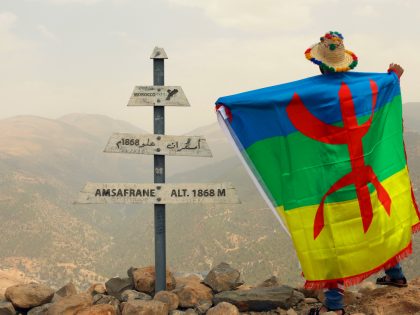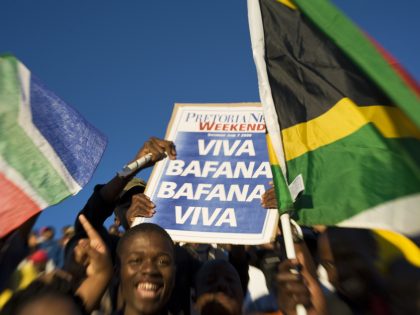Visual Intimacy
Andrew Dosunmu's film "Mother of George" is a film about love and tradition set amongst Nigerian immigrants in New York City.

Danai Gurira in a scene from "Mother of George."
From the opening moment of Andrew Dosunmu’s magnificent new film, “Mother of George,” the viewer is immediately transported into a dream space – one of deep indigos, radiant golds, and vibrant reds. Dosunmu and his cinematographer, Bradford Young, are masters of aesthetics. And unlike Dosunmu’s previous film, Restless City, which was mostly stylish and beautifully filmed, he uses Darci Picoult’s script to craft an engaging story with deeply developed characters. Indeed, Andrew Dosunmu readily admits that he made Restless City because he was frustrated and searching for a way to raise awareness and money to produce “Mother of George.”
Mother of George tells the story of Adenike (the brilliant and stunning Danai Gurira–better known as Michonne from The Walking Dead) who is brought to Brooklyn from Nigeria by Ayodele (Isaach de Bankolé) to get married. The couple is very much in love, but as time passes and Adenike still does not become pregnant, the pressure begins to mount on her to do something about it. The story is all about the lengths she is willing to go for the person she loves.
The film’s languid pace and breathtaking sensuality offers stark contrast to the heartbreaking urgency of Adenike’s situation. Many have already noted how visually arresting the work is, but there is also something to be said for the way Dosunmu uses sound to create a level of intimacy that, at times, can feel so invasive as to give the viewer the sense of being a fly on the wall. Whether it be the sizzling of oil in the deep fryer of Ayodele’s restaurant, the heavy breathing and moans during the couple’s love-making, or Adenike’s snot-filled sobbing, sounds play a pivotal role in the affective power of the film.

Visually, the film is so spectacular that it draws comparison to director Wong Kar Wai’s mastepiece, “In the Mood for Love.” This is not only due to the movie’s rich cinematography and editing, but also the costumes. Gurira’s bright and elegant dresses, have a point of reference only in that of the dresses worn by Maggie Cheung in Wai’s tragic romance.
The film’s sole weakness is in some of the dialogue. At times, the lines and their delivery can feel a little unnatural. Most of the time, the actors are talented enough to overcome this issue. The one exception being Yaya Alafia, who plays Adenike’s close friend and confidant, Sade. However, this is just a minor flaw since there is so little dialogue. The reason for this being, as Andrew Dosunmu put it during the pre-screening, “dialogue kills cinema; it’s an easy way out.”
Overall, Mother of George is a glorious film that should be seen while it is still in theaters so you can fully bask in its aesthetic and sensual splendor. It premiered last night–Friday, September 13–at the Angelika in Manhattan’s West Village. For those of you not in New York, check here to see if and when it will be opening near you.



















